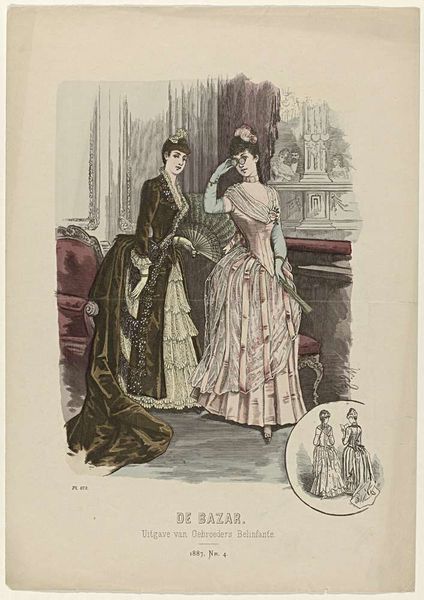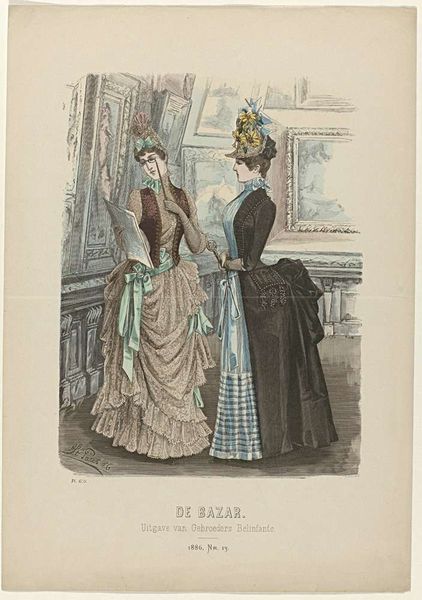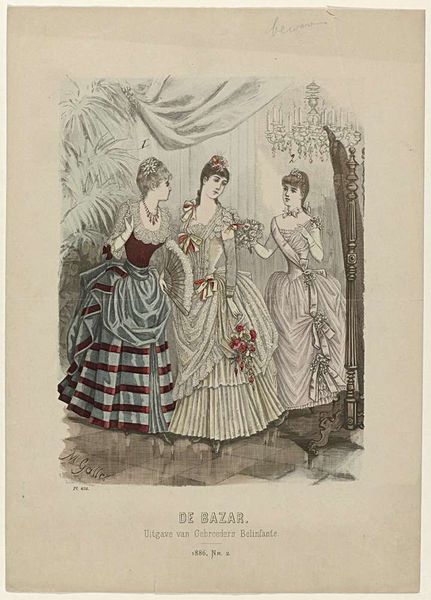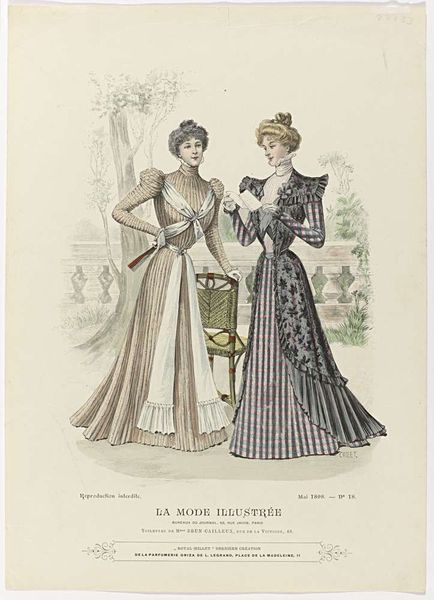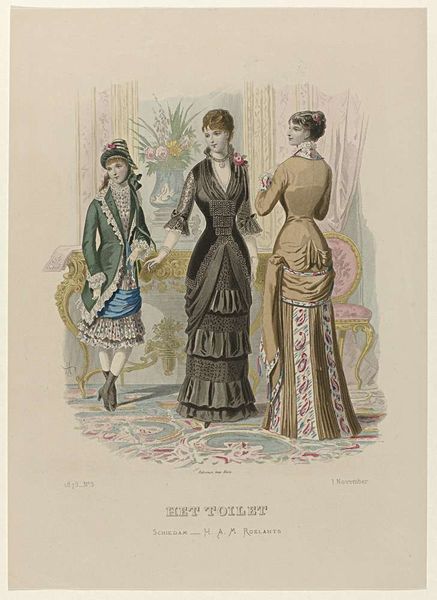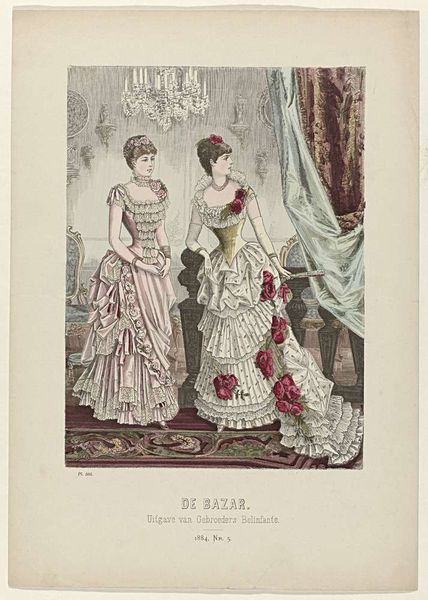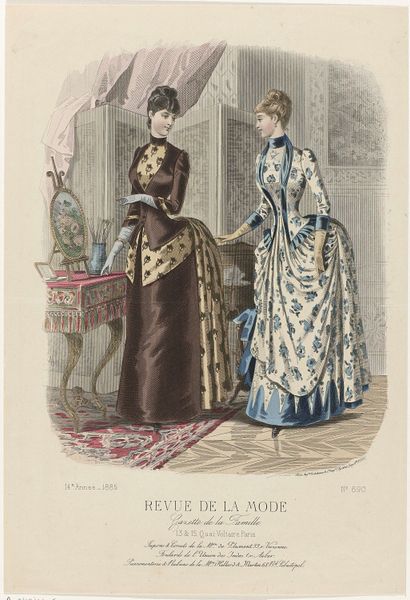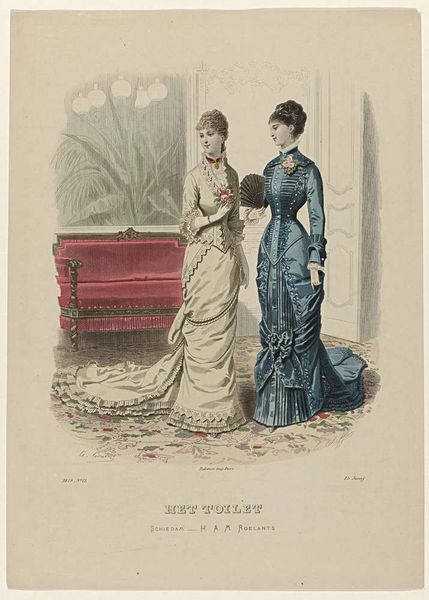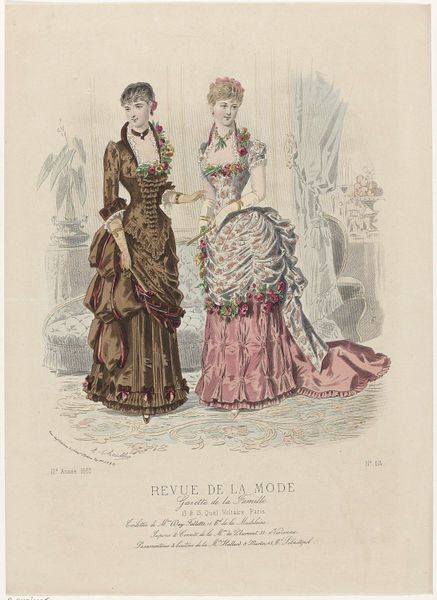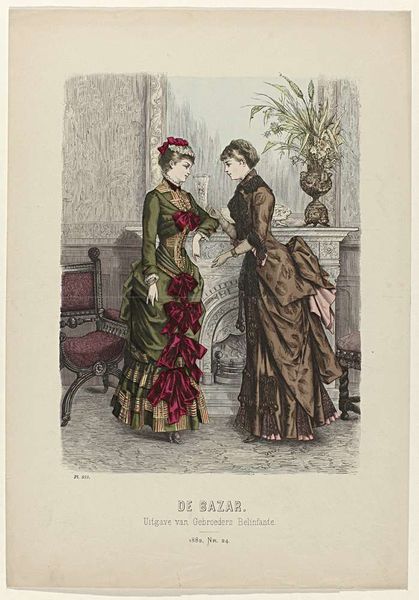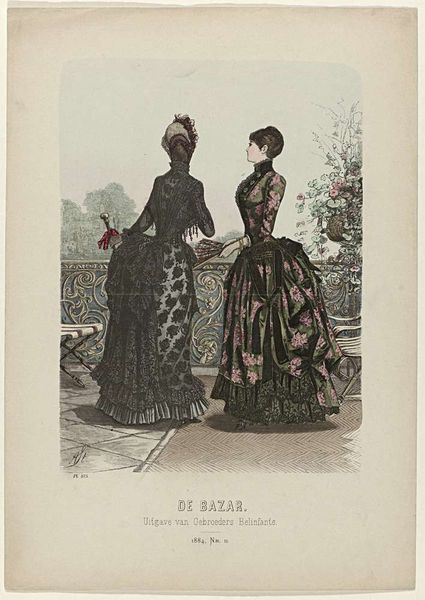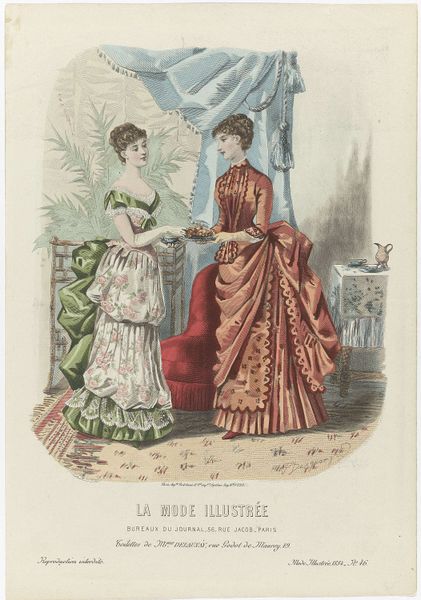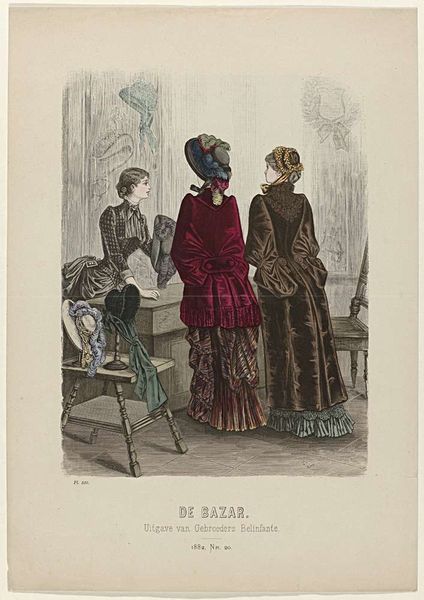
drawing, lithograph, print, etching, ink
#
portrait
#
drawing
#
art-nouveau
#
lithograph
# print
#
etching
#
figuration
#
ink
#
coloured pencil
#
genre-painting
Dimensions: height 382 mm, width 270 mm
Copyright: Rijks Museum: Open Domain
Editor: This print, titled "De Bazar, 1882, Nr. 16, Pl. 511," looks like it's from 1882. The medium seems to be etching and lithograph. It depicts three women in different outfits. The first is dressed in very ornate attire and is noticeably more decorated than the others. I'm intrigued by how the clothing reflects status and the artist's choices. How do you interpret this work? Curator: That's a sharp observation. When I look at this piece, I see more than just fashion. The detailed depiction of each dress reads like a coded language, hinting at the social strata and perhaps the constraints placed upon women in the late 19th century. Editor: Can you elaborate on that "coded language?" Curator: Consider the woman in the darker, more austere dress versus the one adorned with ruffles. What could these stylistic choices be conveying about their roles, perhaps their financial standing, or even their access to certain freedoms? How might contemporary feminist theory help us understand the limited opportunities afforded to these women within the restrictive patriarchal system of that era? Editor: That's fascinating, I hadn't considered the clothing as an indicator of a lack of certain freedoms. Is the artist making a social commentary, or is this simply a document of fashion? Curator: I think it is both. While it serves as a record of the fashion trends of 1882, it also subtly reflects the power dynamics inherent in those trends. It prompts questions about who dictates these styles, who can afford them, and who is excluded. Can art not be separated from questions of politics and intersectional discussions on gender? Editor: So, it's less about pretty dresses and more about the society that dictates them? Curator: Exactly. It’s about using a lens of feminist theory to decode what these visual representations tell us about power, privilege, and social expectations. It transforms an image of dresses into a profound narrative about the era. Editor: I’m beginning to see the social implications now. Thank you. Curator: It’s always a pleasure to explore the deeper narratives embedded within art. Hopefully, by opening conversations and viewing artwork within a new context we are helping to question society.
Comments
No comments
Be the first to comment and join the conversation on the ultimate creative platform.
